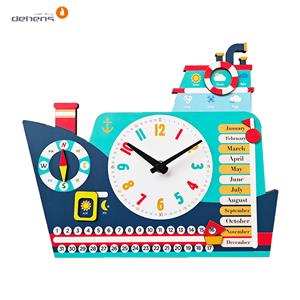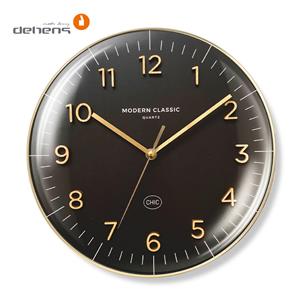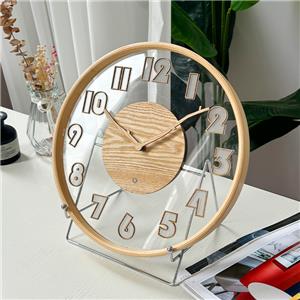2025 Wall Clock Design Trends: Minimalism + Smart Interaction, 3 Styles Taking Over Global Home Decor
---Minimalist Smart Clocks、Organic Smart Rustic Clocks、Industrial Smart Gear Clocks、Smart Clocks、Ultra-Thin Minimalist Clocks
In home decor’s evolving landscape, wall clocks have shifted from timekeepers to design statements blending function and art. As 2025 unfolds, the global market—projected to hit $4.2 billion by year-end (Grand View Research, 5.8% CAGR)—is driven by two pillars: minimalist aesthetics and seamless smart interaction. Three styles now lead, redefining how timepieces fit modern spaces worldwide.
The Dual Core: Minimalism Meets Smart Interaction
This fusion isn’t a fad but a response to cluttered, information-heavy lives. Consumers crave “calm functionality”: minimalism (clean lines, negative space, neutrals) for aesthetics, and smart tech for utility—without sacrificing style.
“2025 is ‘quiet intelligence’ for home decor,” says Maria Chen (IKEA Global Innovation Lab). “Consumers want smart devices that blend in, not stand out. Wall clocks balance this perfectly—fixed, but able to soothe or distract.”
Data backs this: 78% of global buyers prioritize “visual simplicity” (Home Decor Association), while 65% seek integrated smart features. 2025’s smart clocks offer subtlety—voice control (Alexa/Google Home), ambient light sensors, humidity/temp trackers—no bulky screens. Minimalism now leans “intentional”: texture and material contrast, not just monochrome, to suit compact urban spaces.
Trend 1: Ultra-Thin Minimalist Smart Clocks
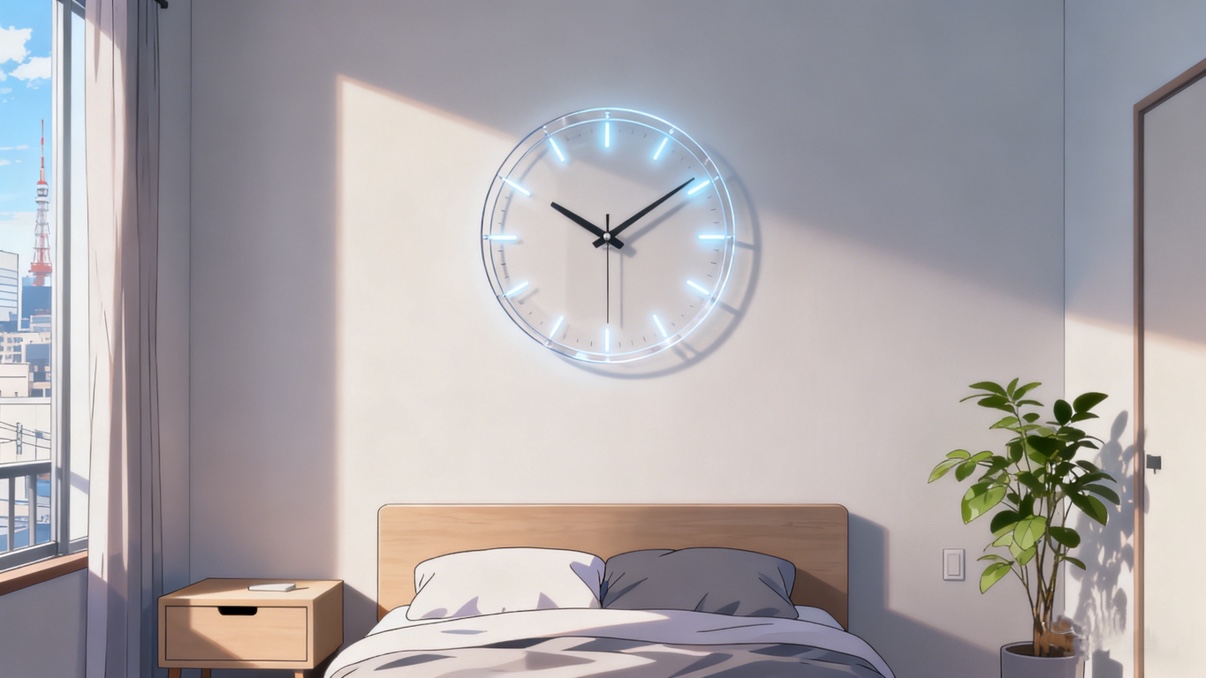
These 2–3mm thick (thinner than a smartphone) clocks lead the charge, with frameless, monochrome (black/white/transparent) designs and hidden tech. Key features: motion sensors (activate display on approach), silent quartz movements, wireless charging.
The Sony Xperia Thin Clock (2.5mm thick) exemplifies this: transparent acrylic shows wall textures, creating a “floating” look. Its Ambient Sync adjusts LED hand brightness/color to natural light; voice commands set reminders or sync smart homes—no design disruption.
“In Tokyo or New York, small spaces demand non-bulky decor,” says Takashi Yamamoto (Sony Home Electronics). “Our clock feels part of the wall, not an add-on.”
Japan saw 120% Q1 2025 sales growth for ultra-thin smart clocks (Yano Research), with 60% buying for space-saving. Europe’s Muuto and Hay use recycled acrylic/bamboo for eco-appeal. These clocks thrive in bedrooms (silent, ambient light), home offices (discrete reminders), and small apartments (transparent designs expand visual space).
Trend 2: Organic Smart Rustic Clocks
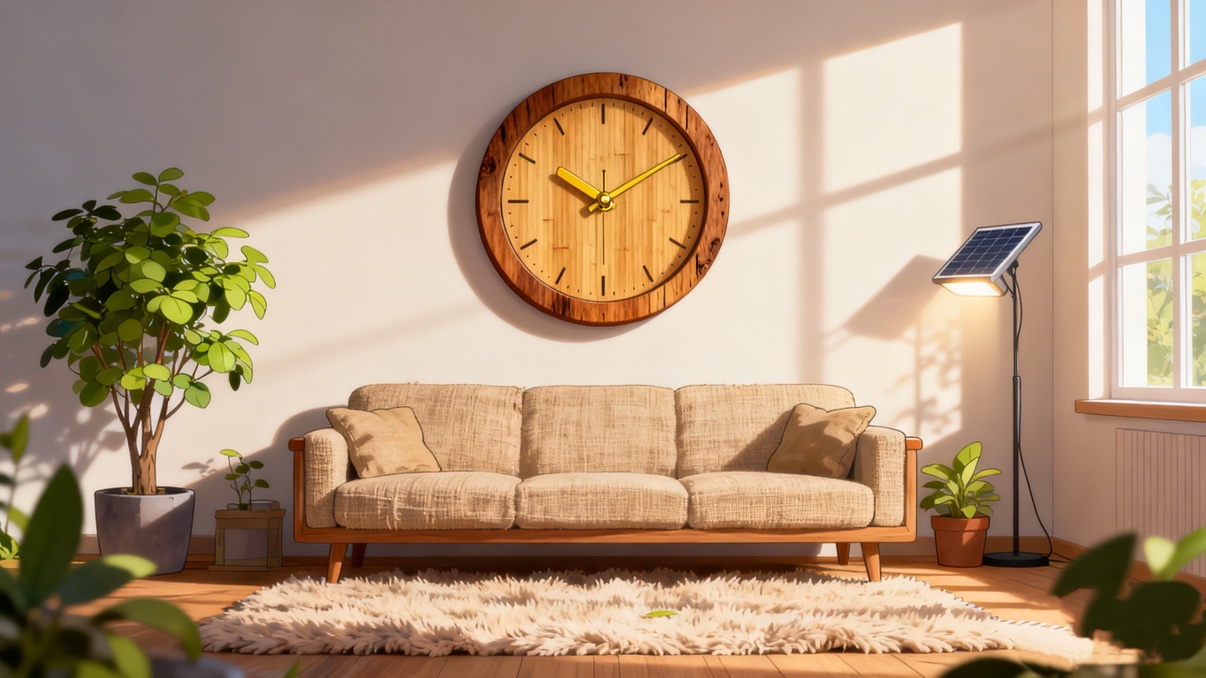
For warmth + modernity, these clocks pair natural materials (reclaimed wood, bamboo, stone) with smart tech—no ornate carvings, just material beauty. Features: subtle wood grain, matte brass hands, hidden modules (voice control, plant care alerts), solar-powered LEDs.
GreenTime’s Forest Smart Clock stands out: reclaimed oak (wildfire-damaged forests), bamboo face, brass hands. It alerts to high humidity (protects furniture/plants) and syncs with thermostats—controlled via app, no visible buttons.
“The trend fights tech’s coldness,” says GreenTime’s Emma Carter. “People want nature indoors, but not without smart convenience.”
North America/Europe love this style: 62% of US homeowners who renovated 2025 living rooms used natural materials (Houzz), with clocks as top picks. Germany’s Bulthaup pairs them with minimalist kitchens. They fit living rooms, dining areas, entryways—pairing with wool rugs, linen sofas, and plants for a curated feel.
Trend 3: Industrial Smart Gear Clocks
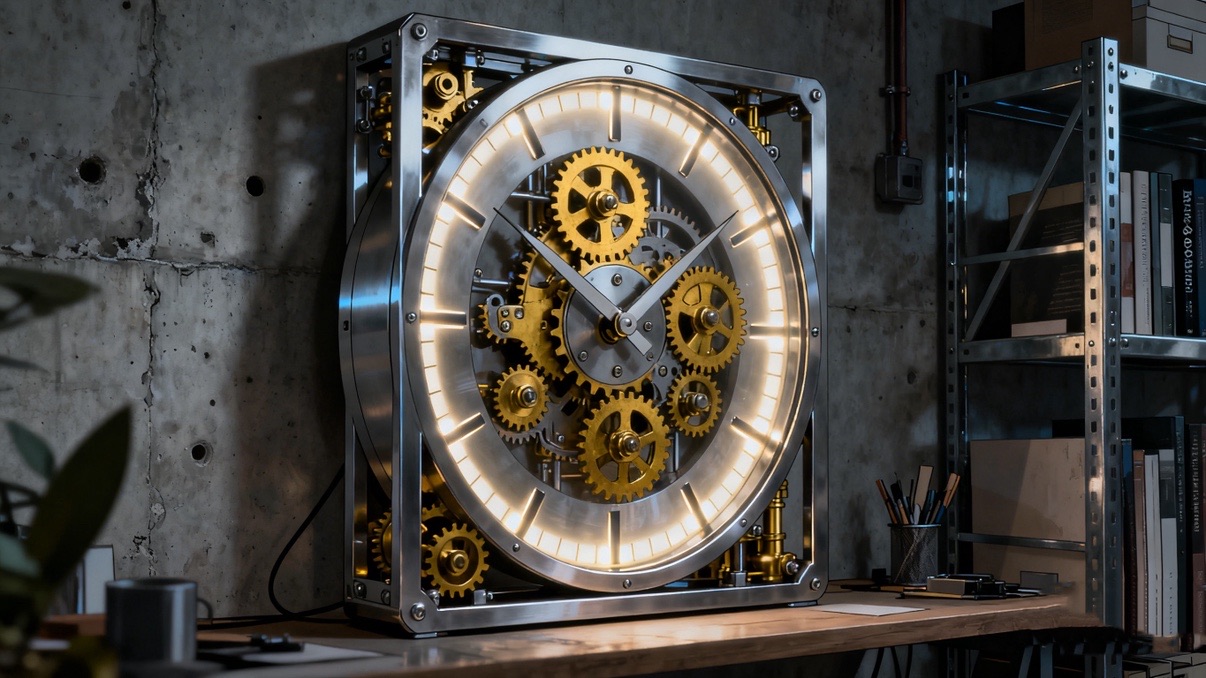
For edgy aesthetics, these clocks draw from factory machinery: exposed gears, metallic finishes (steel/aluminum/brass), bold geometry. Smart additions: LED backlighting, motion-activated gears, smart home sync.
Bang & Olufsen’s Clockwork Pro (20-inch) leads: stainless steel frame, exposed brass gears, matte black face (no numbers—gears indicate time). It has a Harman Kardon speaker (music/calls), motion-activated LED gear lighting, and security system sync.
“Industrial design celebrates function—we add tech to elevate it,” says Lars Olsen (Bang & Olufsen). “It’s a centerpiece, not just a clock.”
Urban professionals in NYC, London, Berlin favor these—95% customer satisfaction (Storables). They shine in lofts with high ceilings/exposed brick, pairing with concrete tables and leather sofas.
Market Outlook: Sustainability + Personalization
2025’s growth hinges on two more trends: sustainability (recycled materials, solar power, repair programs—GreenTime/Muuto lead) and personalization (custom clock faces, adaptive smart features that learn user habits).
“One-size-fits-all is over,” Chen says. “Brands need style, substance, and alignment with consumer values.”
For buyers, options abound: ultra-thin for small spaces, organic for warmth, industrial for edge. 2025’s clocks prove timekeeping can be functional and fabulous—bridging past and present, simplicity and tech.
---Minimalist Smart Clocks、Organic Smart Rustic Clocks、Industrial Smart Gear Clocks、Smart Clocks、Ultra-Thin Minimalist Clocks




